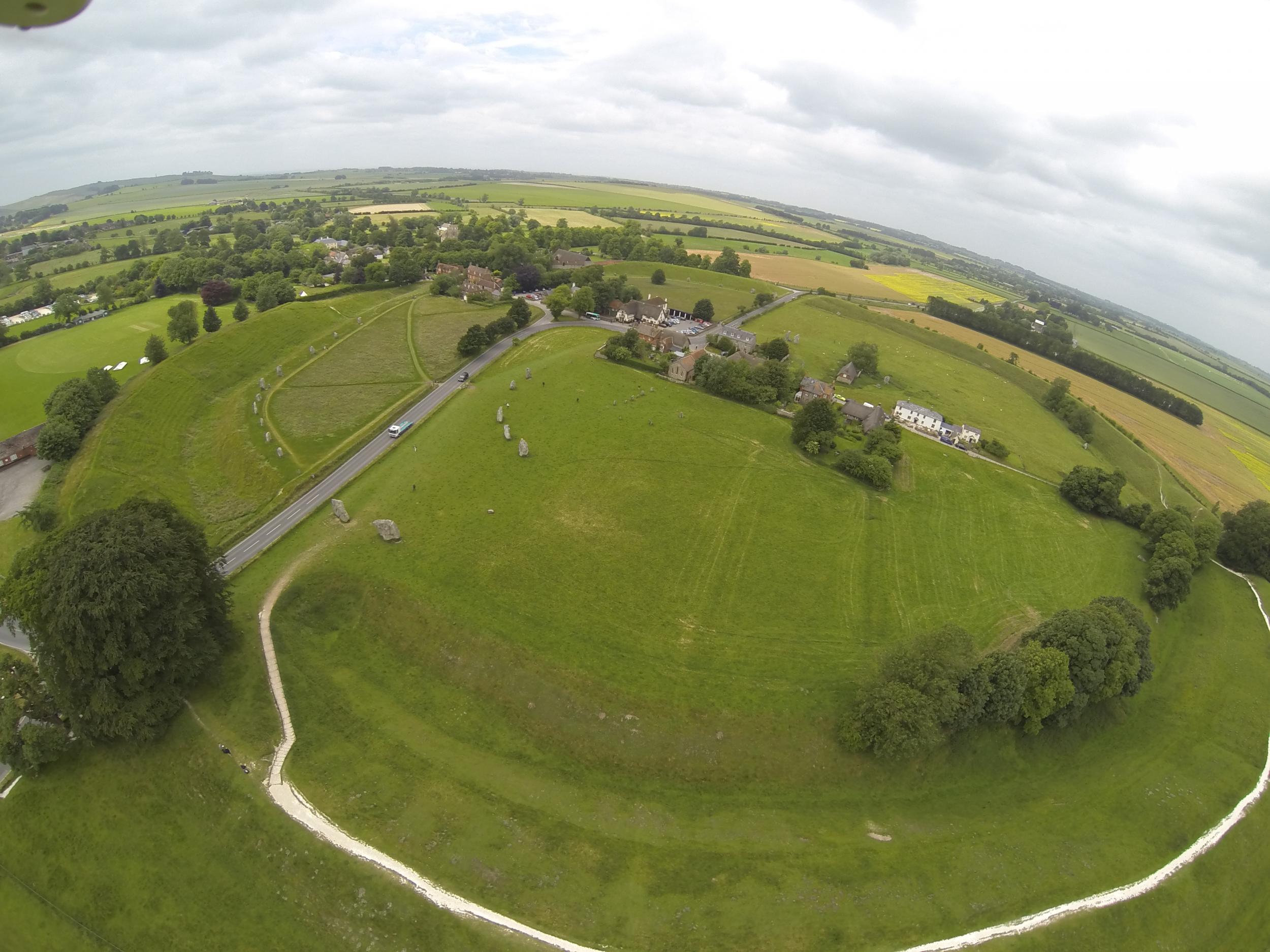England’s first prehistoric stone ‘circles’ may have been square
It is believed to be the first prehistoric "stone square" ever discovered – in Britain or continental Europe

One of Britain’s most famous prehistoric monuments - Avebury in Wiltshire – may be substantially more ancient than previously thought.
Investigations within the UNESCO World Heritage designated stone circle - the largest in Britain - have revealed a hitherto unknown, and probably very early, series of ancient standing stones, are arranged, not as a circle, but as a 30 metre by 30 metre square.
It is believed to be the first prehistoric "stone square" ever discovered – in Britain or continental Europe. It is conceivable that the newly discovered monument, which would have originally consisted of around 17 standing stones, was built up to a thousand years before both Stonehenge’s and Avebury’s surviving stone circles.
Most of the newly discovered stones (or in some cases the holes they had stood in) had been buried (or, in the case of stone holes, filled in) at some stage in prehistory – or, more probably, in mediaeval or early modern times.
What’s more, at the centre of the square, archaeologists, re-analysing pre-war archaeological records, have discovered the remains of a substantial Neolithic timber building – constructed in mid-fourth millennium BC style.
That would make the ten metre long, six metre wide building the oldest feature yet found at Avebury. It would also raise the possibility that the stone square, constructed around it, is equally old or was built slightly later but while the building was still standing (i.e., up to a few hundred years later). The sides of the building and the sides of the stone square are aligned with each other – so a relationship between the two is likely.
If the building does indeed date from some five and a half thousand years ago, the discovery helps push back the date of the origins of Avebury by up to a thousand years.

If the newly discovered stone square also dates back to the fourth millennium BC, then it would potentially be the oldest standing stone complex in England – and around the same age as the oldest ones in Scotland.
What’s more, the square shape of the newly revealed early Avebury standing stone enclosure is totally unique – indeed without parallel anywhere.
It is likely that both the rectangular building and the stone square surrounding it were of religious or ceremonial significance – but so far the archaeologists have found no clues as to the precise nature of any ritual or ceremonial activities that may have taken place there.
The early date for the stone square (and the building it appears to enclose) is also supported by two other pieces of evidence from Avebury. Both the site of the timber building and the stone square itself were located in the centre of a 100 metre diameter stone circle (in the southern half of Avebury) which was probably built at a later date – perhaps in or by the mid-third millennium BC.
A second identical stone circle was erected, presumably at around the same time, in the northern half of Avebury.

Significantly a group of three massive standing stones stood at the centre of that northern circle – and has been scientifically dated to somewhere between around 3500 and 2800BC.
The stylistic dating of the southern circle’s timber building and the scientific dating of the northern circle’s central standing stones both point to very early ceremonial activity at the centre of what would eventually become Avebury’s still surviving northern and southern stone circles.
Additional support for an early date for the newly discovered timber building and stone square is also provided by fragments of pottery all dating from between 3600 BC and 2800 BC found many years ago in that specific area.
The discovery of a stone square, arguably pre-dating most British stone circles, raises the possibility that other similar monuments were built in the fourth millennium BC – but have simply not been discovered. The find therefore has the potential to completely rewrite the evolution of standing stone complexes in Britain.
The Avebury UNESCO World Heritage Site, cared for by the National Trust, contains three stone circles – including Europe’s largest which is 330 metres across and originally comprised around 100 huge standing stones.
A research team led by the University of Leicester and the University of Southampton used a combination of electrical resistivity, ground-penetrating radar and archival research to investigate the site.
Their work was funded by the Arts and Humanities Research Council and supported by the National Trust, as well as archaeologists from the University of Cambridge and Allen Environmental Archaeology.
“The new research pushes back the origins of Avebury to an earlier period and reveals the remarkable complexity of the history and construction of the complex. The work demonstrates just how much still awaits discovery in and around this world famous site,” said Dr Nick Snashall, National Trust archaeologist at Avebury.
Archaeologist Dr Mark Gillings of the University of Leicester, said: “Our research has revealed previously unknown megaliths inside the world-famous Avebury stone circle.
"We have detected and mapped a series of prehistoric standing stones that were subsequently hidden and buried, along with the positions of others likely destroyed during the 17th and 18th centuries. Together, these reveal a striking and apparently unique square megalithic monument within the Avebury circles that has the potential to be one of the very earliest structures on this remarkable site.”
Join our commenting forum
Join thought-provoking conversations, follow other Independent readers and see their replies
Comments